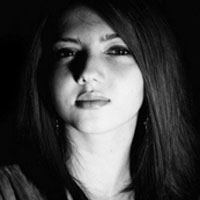This week the spotlight is on Todd Haynes’s Carol, starring Cate Blanchett and Rooney Mara as two women who fall in love in 1950s New York. The movie itself is the kind of staggering achievement that makes all the nonsense that comes along with a career in the arts worthwhile—and for Haynes and for his stars, I hope that’s a comfort because my goodness this film had to face some nonsense on its march to theaters.
Carol’s marketing has been surprisingly tactful and respectful of the film’s integrity—always a pleasant surprise when it comes to lesbian entertainment—but it seems even Harvey Weinstein’s best-laid plans can’t survive the scrutiny of the pre-release media cycle.
Not everyone is as bold as the reporter who actually congratulated the cast and crew for making the film feel “heterosexual” at a press conference this week, but the press’s cluelessness around the film’s sexual content has been persistent to the point of embarrassment. “Steamy sex scene!” screams Entertainment Tonight. “What was the most helpful direction Todd gave you on doing the love scenes?” asks The Hollywood Reporter. “Cate Blanchett showcases her tomboy side promoting lesbian drama Carol,” insinuates The Daily Mail.
It’s hard to tell with how many vultures there seem to be in entertainment news if this is actually how the average person relates to queerness, but even actual human being Jimmy Fallon couldn’t resist an aside while interviewing Cate Blanchett this week on his show: “Tricky subject. And you go, huh, of course that was going on probably.”
“Yes Jimmy, girls have been having sex with girls and boys have been having sex with boys for a long, long time.”
From their graves, one imagines Socrates, Da Vinci, Tchaikovsky, Virginia Woolf, and Frida Kahlo let out some snaps and a neck shake or two of approval.
Intriguingly, this is one of the few ways that gay films are treated in a manner that is noticeably different from lesbian films. Maybe because heterosexual masculinity is constructed as a binary in opposition to queerness and femininity, maybe because men’s sexuality is assumed to be more fixed than women’s, maybe because the hypersexualization of lesbians in our culture continues to persist even now—but men who play gay don’t seem to get subjected to the giggly speculation that women do in the same position.
In anticipation of Carol’s premiere at the Cannes Film Festival, Cate Blanchett gave an interview to Variety in which she was asked if she had ever had past relationships with women. Blanchett answered facetiously, “Yes. Many times,” referring to the fact that indeed women have all kinds of relationships that are not sexual and presumably poking a little fun at the idea of a reporter thinking an interview is an appropriate time for a stranger to ask an actor to reveal their sexual history.
Unfortunately for Cate, her joke fell on deaf ears. The interview ran with the headline “Cate Blanchett Opens The Closet Door With Lesbian Romance Carol” and the actress has been pestered with questions about her sexuality ever since.
How many times does Cate Blanchett have to say she was misinterpreted before reporters stop asking her to comment on the issue? Even if Cate Blanchett had spent all of the early ’90s in the haze of pussy and Patron that journalists seem to want her to divulge, the fact is that she’s married to a man, and she’s been married for nearly 20 years. She has two children. She’s chosen the path of her life and her path hasn’t been as a lesbian. Why obsess over something that didn’t happen, especially when the something that didn’t happen is a matter settled half a lifetime ago?
Listen, I don’t blame anyone who watches Carol and leaves that film wanting to believe that Cate Blanchett is a lesbian. In a career that has no shortage of amazing performances, Carol is her best, her most vulnerable, her most erotic, the most engaged she has ever felt with a romantic screen partner. It’s a natural part of film as an art form to confuse the boundaries of reality and fiction, and when the totality of the work comes together in the way that Carol does, the illusion of the film can outweigh what our minds know to be true.
However, when we expect artists to answer to the illusion of the screen even at the exclusion of reality, we disrespect the magic of cinema and the gift that performers of Cate Blanchett’s magnitude offer through their work. There is a time and a place for everything, and the film’s the thing. The film is your occasion to ask questions, to imagine a universe in which Cate Blanchett isn’t an actress, but is instead a midcentury lesbian or a crumbling Wall Street socialite or the queen of England.
Art is a plunge into the infinite ecstasy of possibility. Life is another matter.





